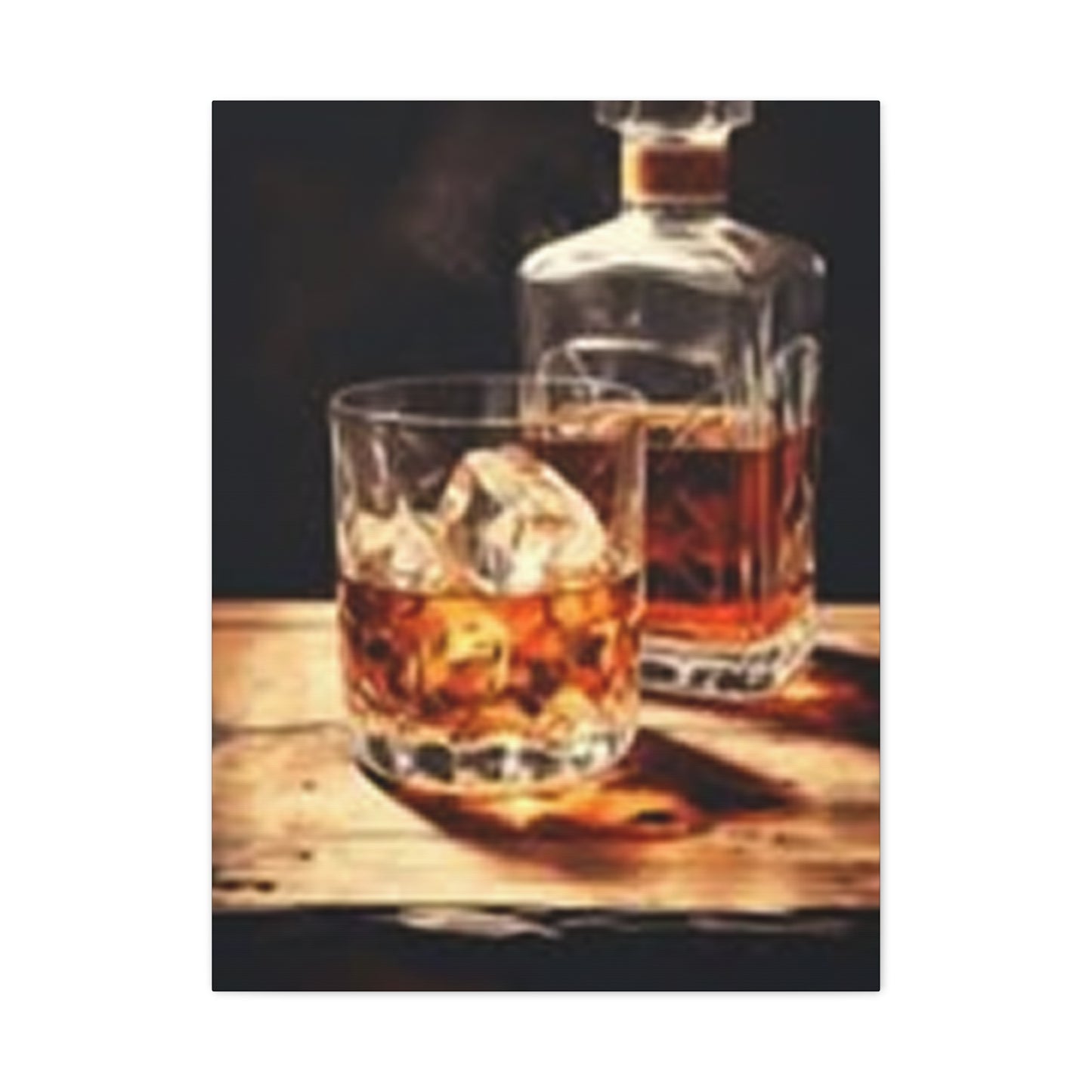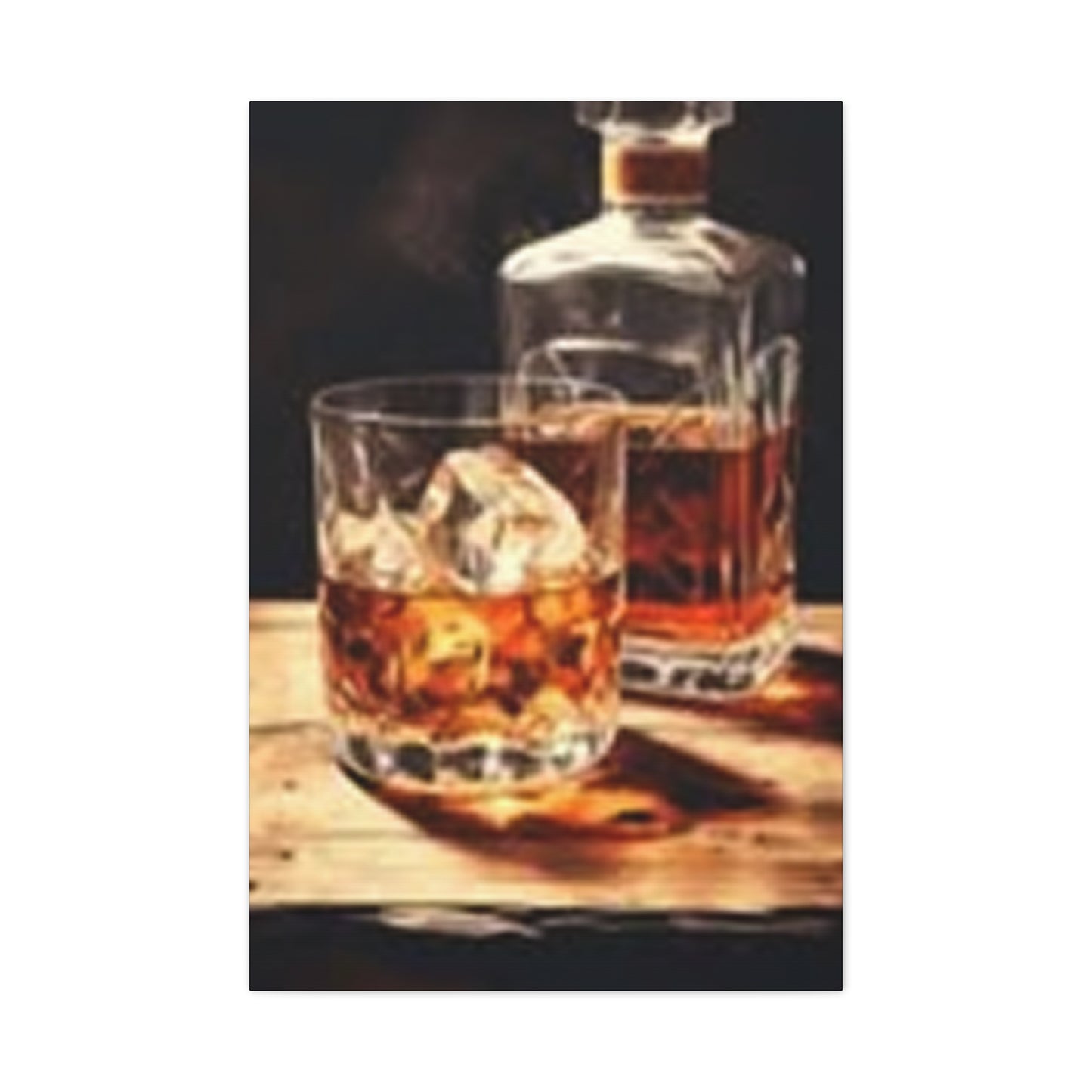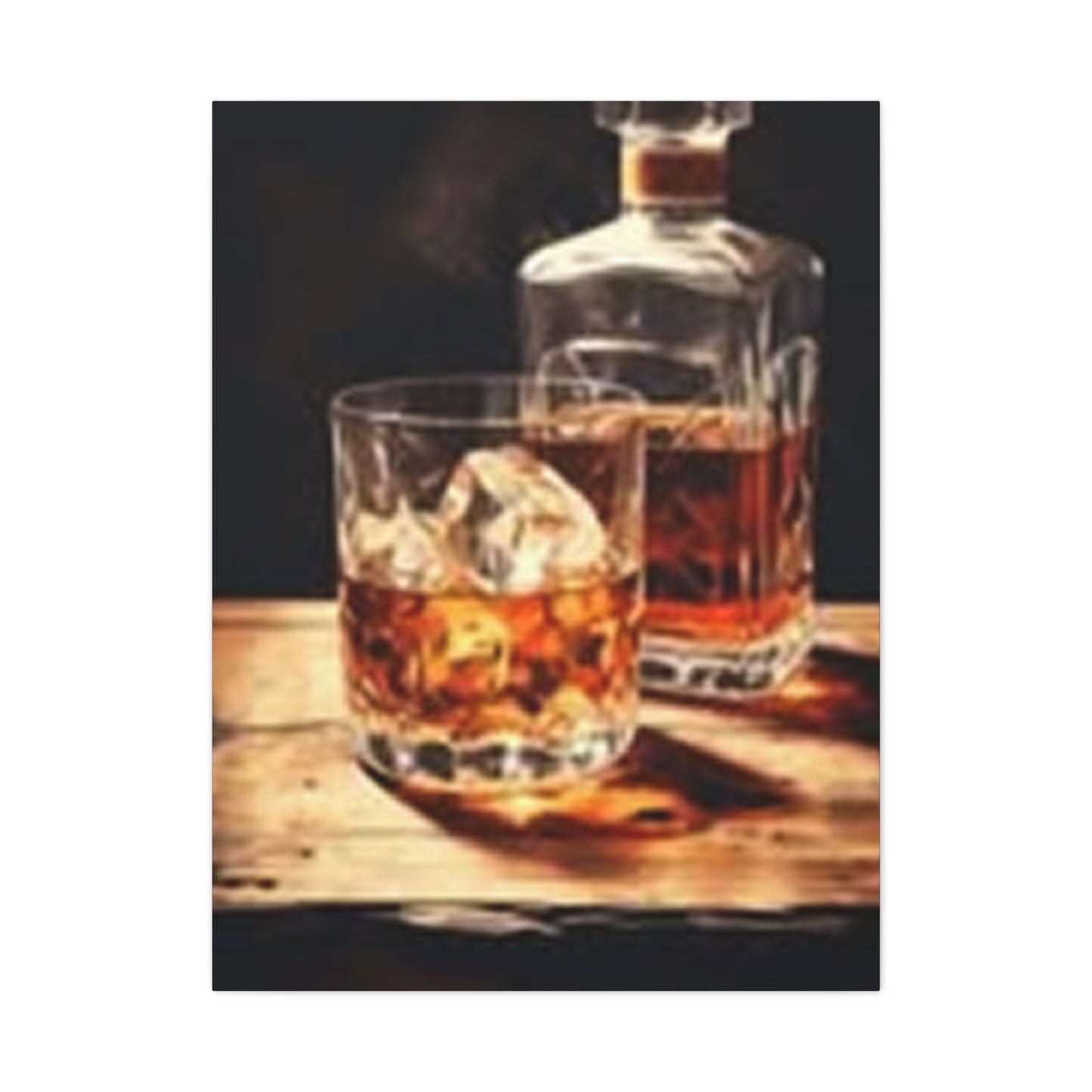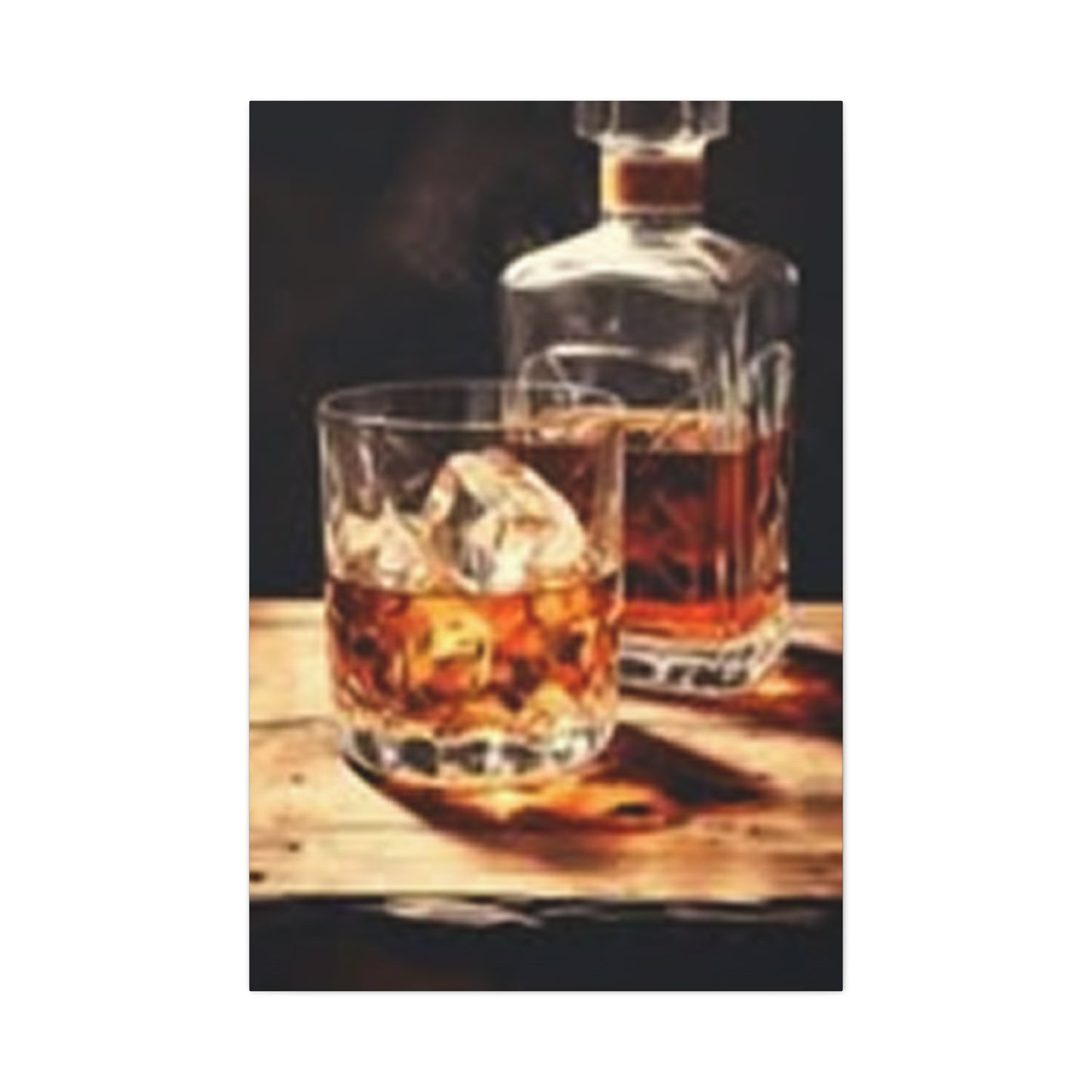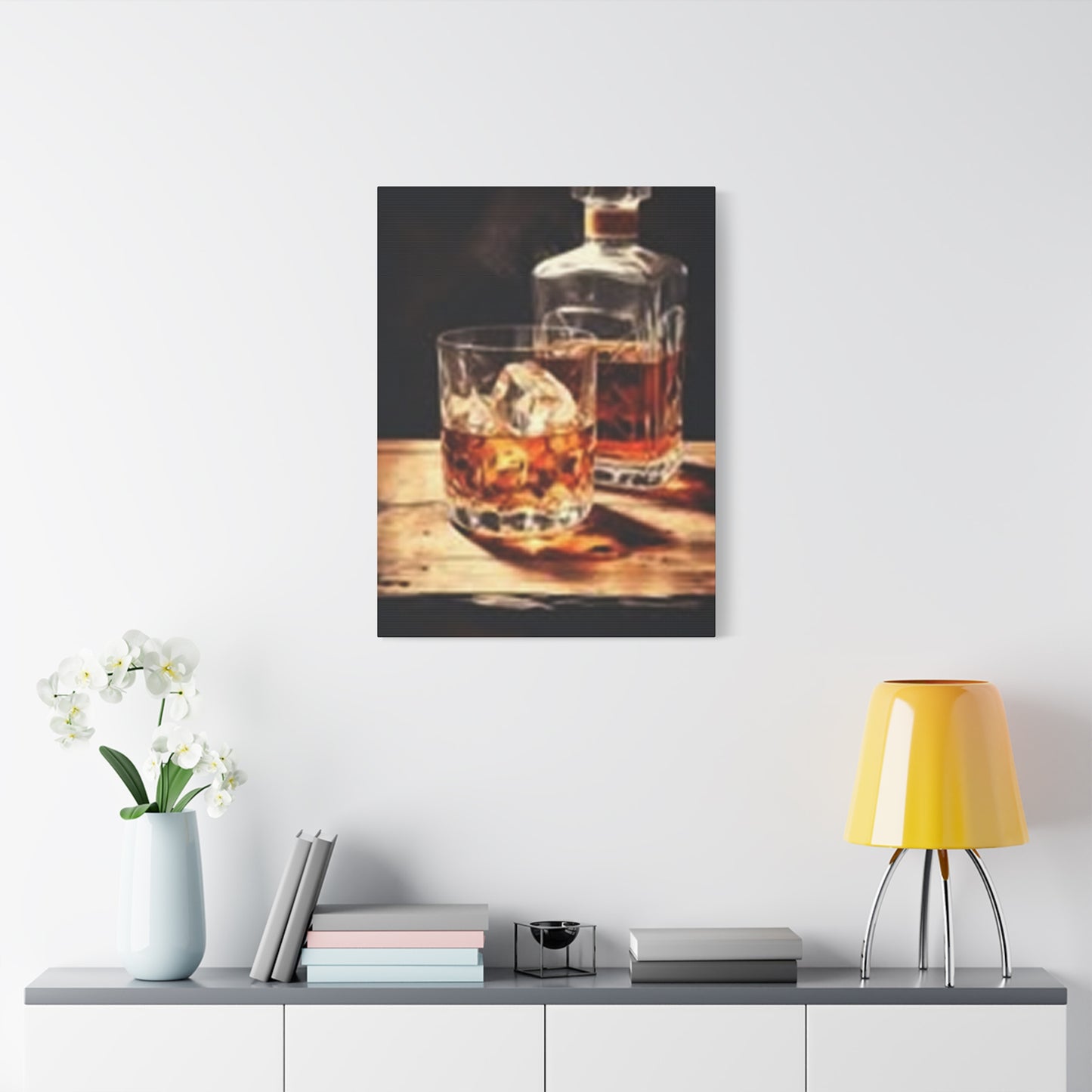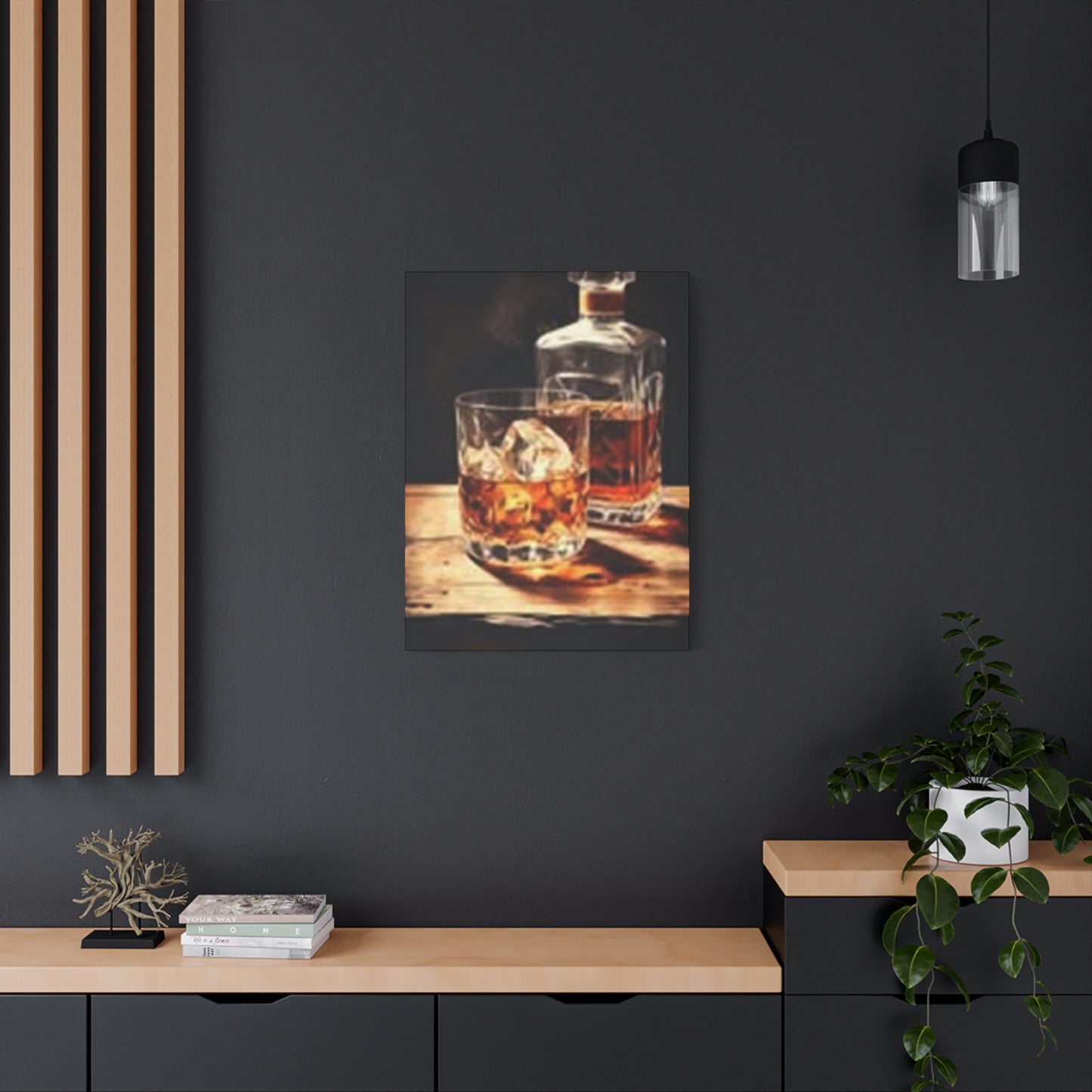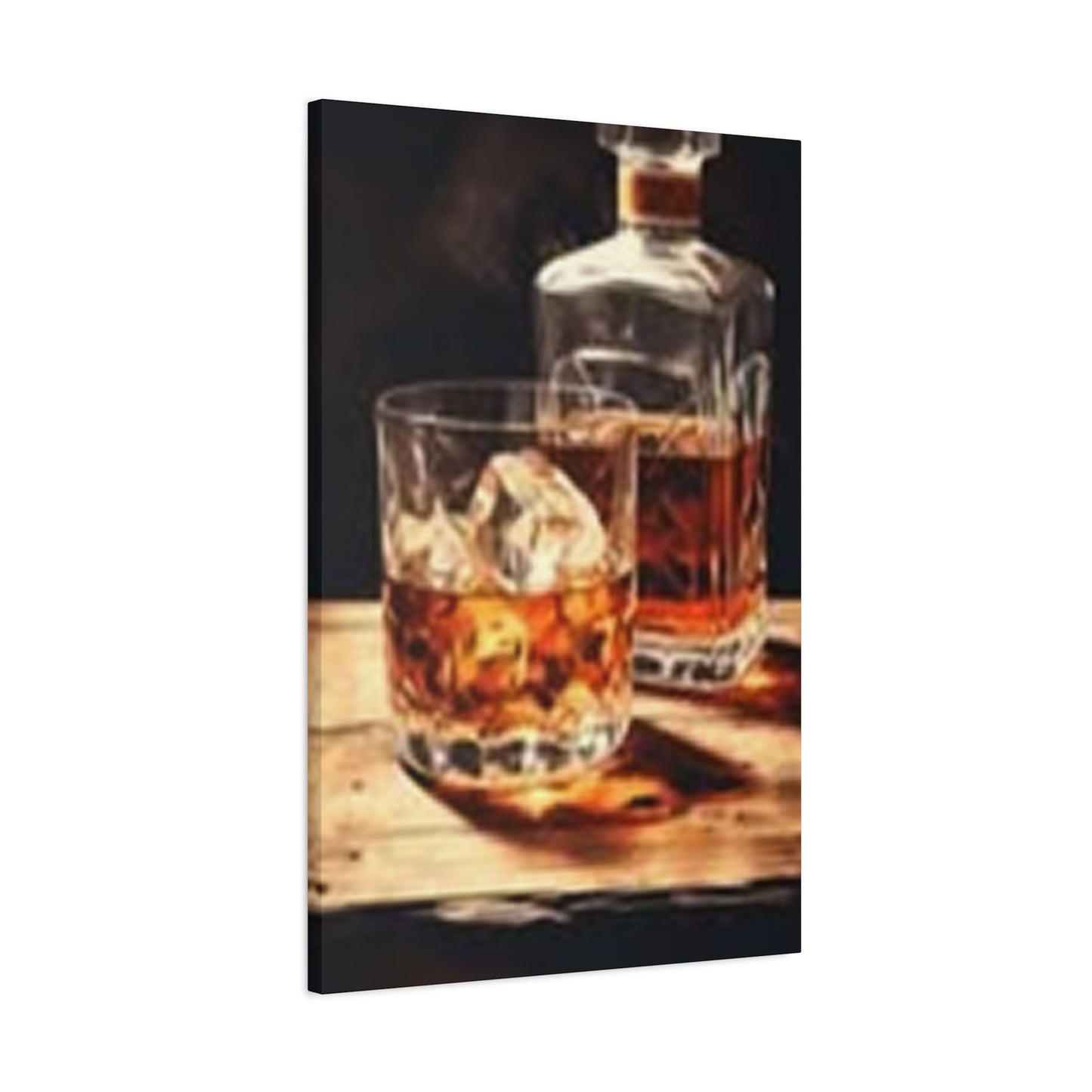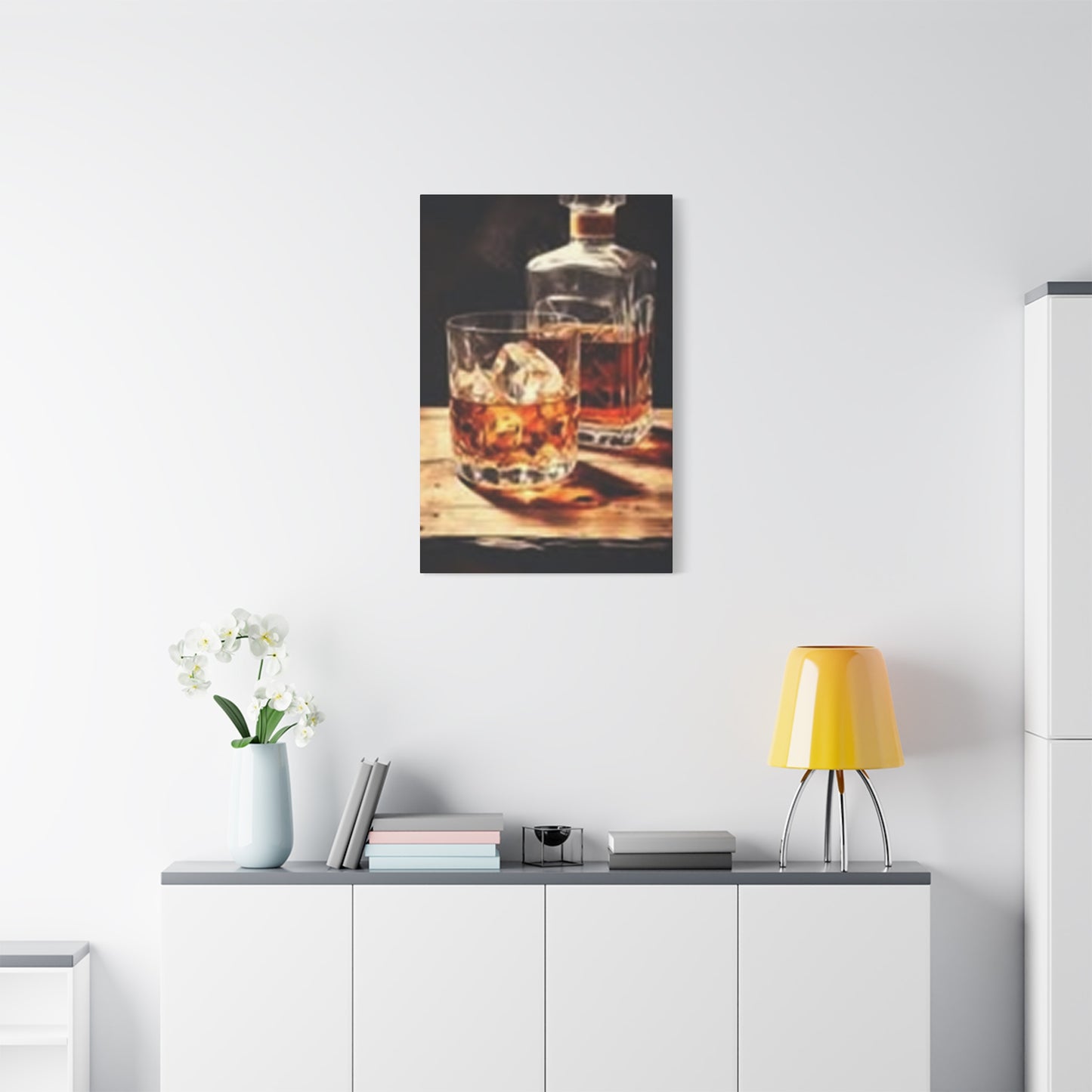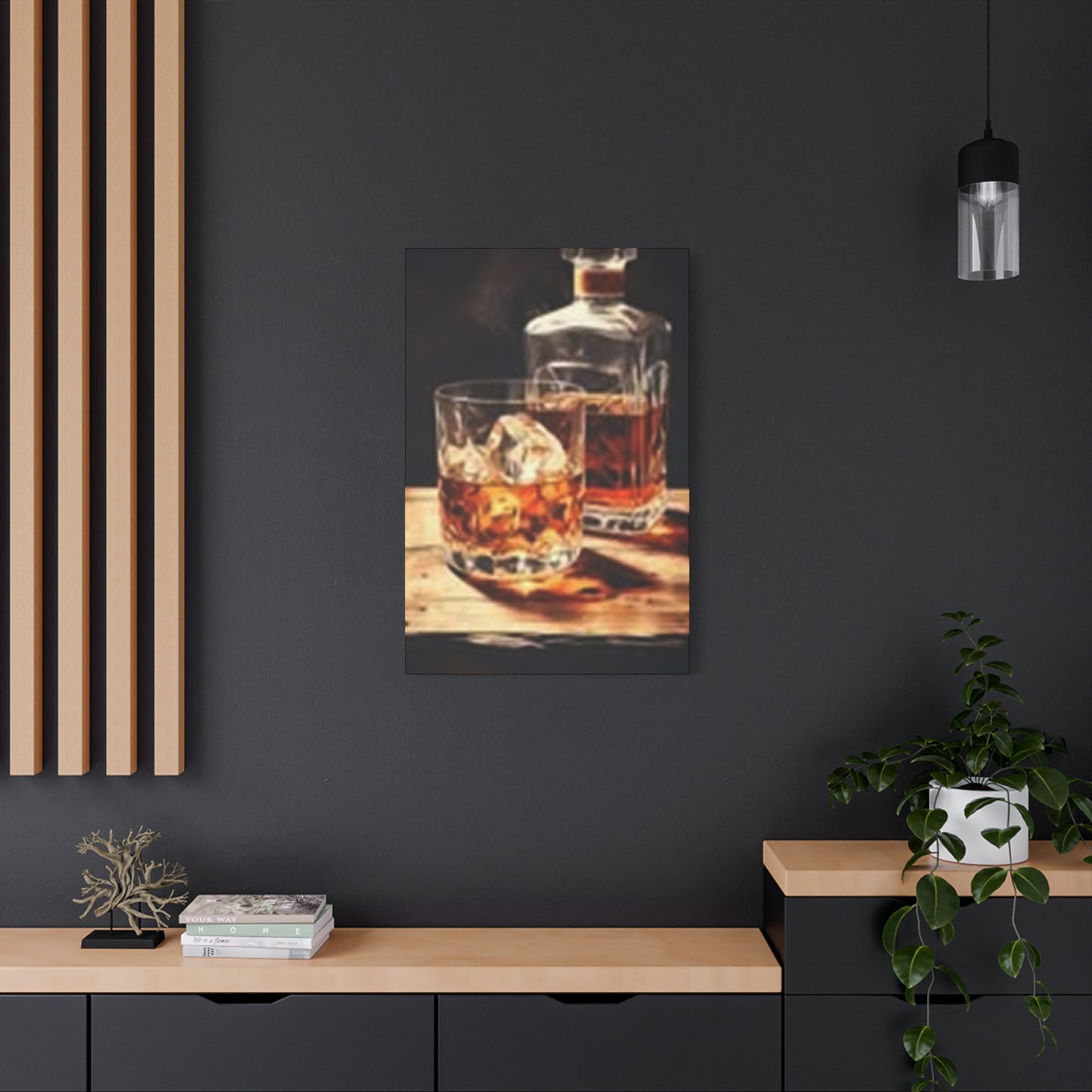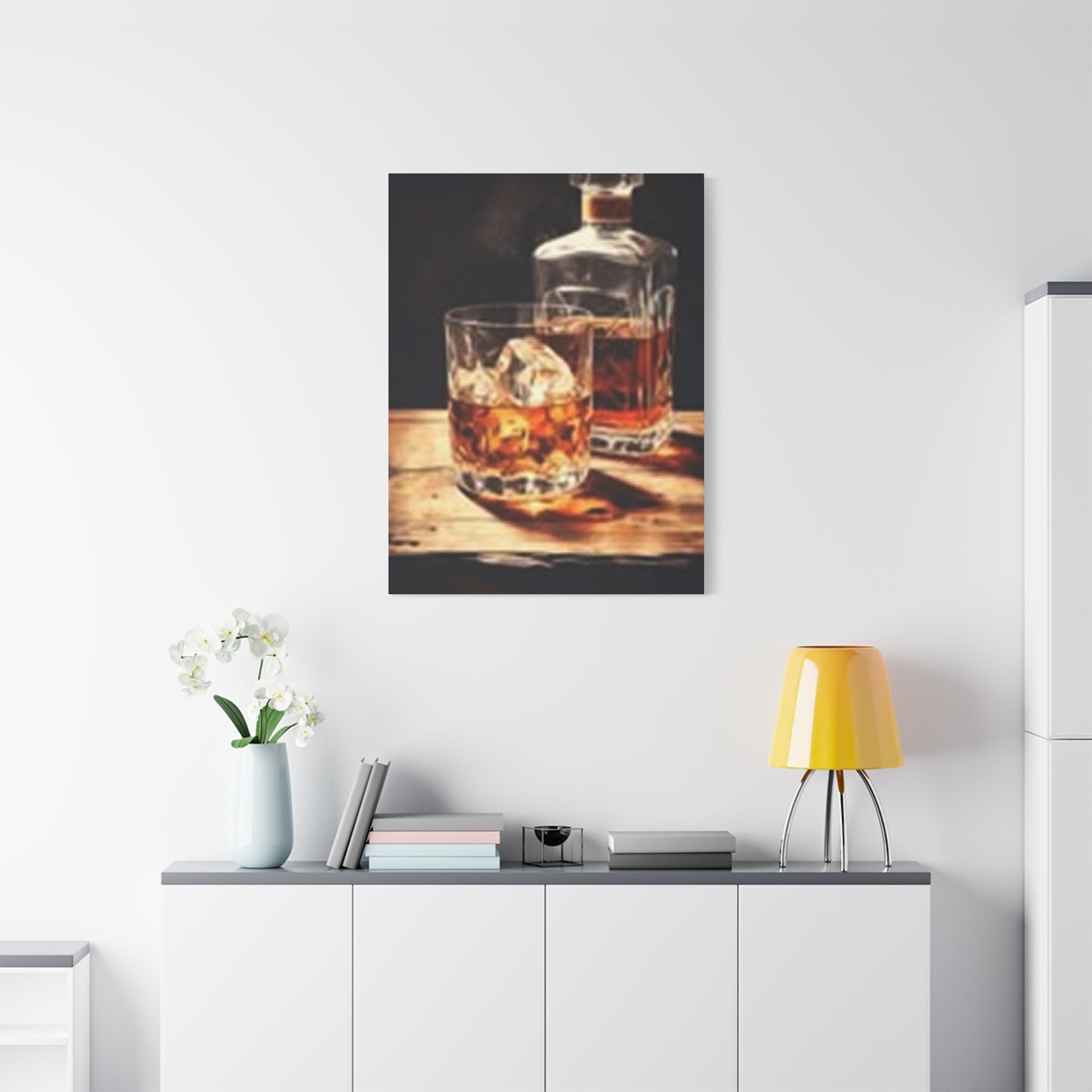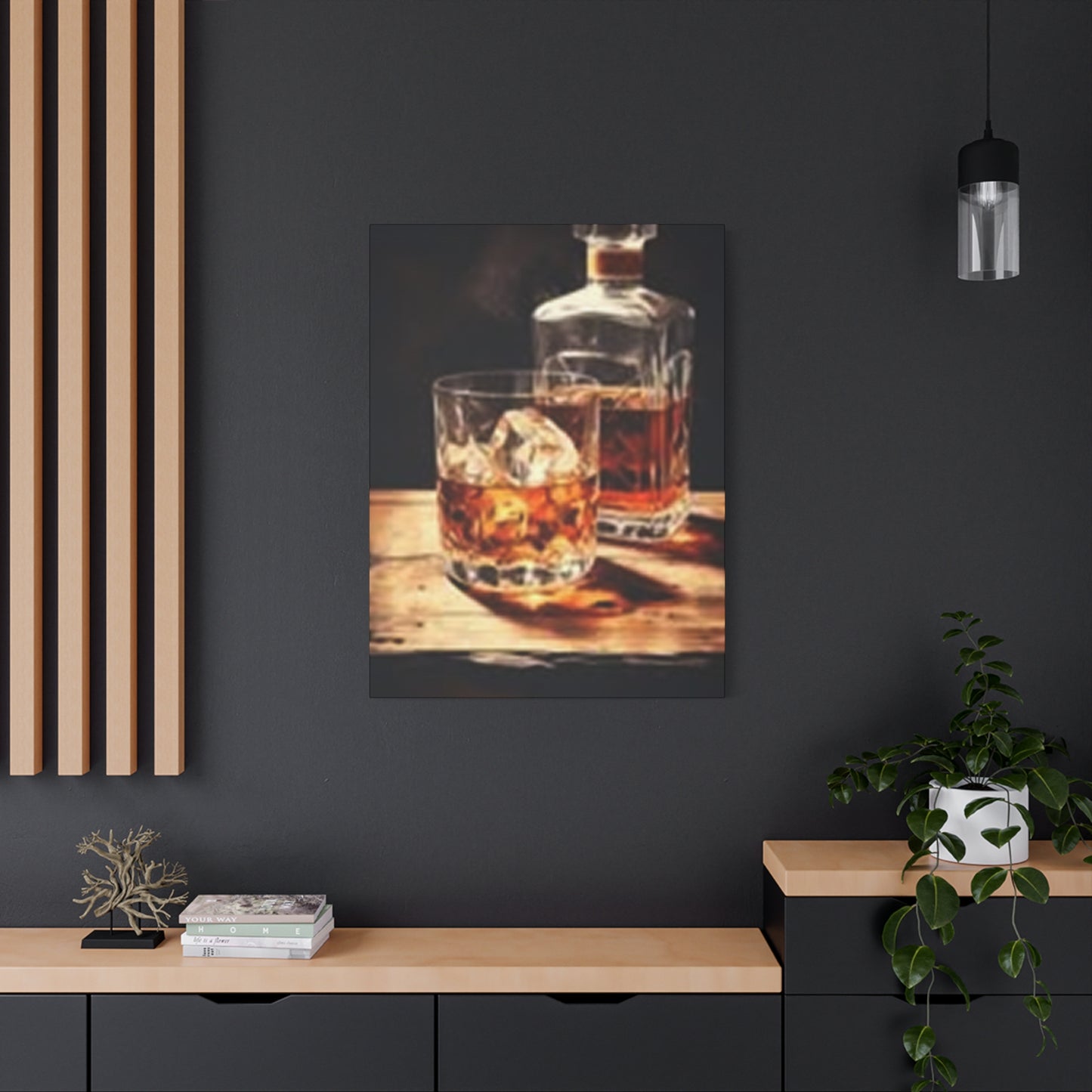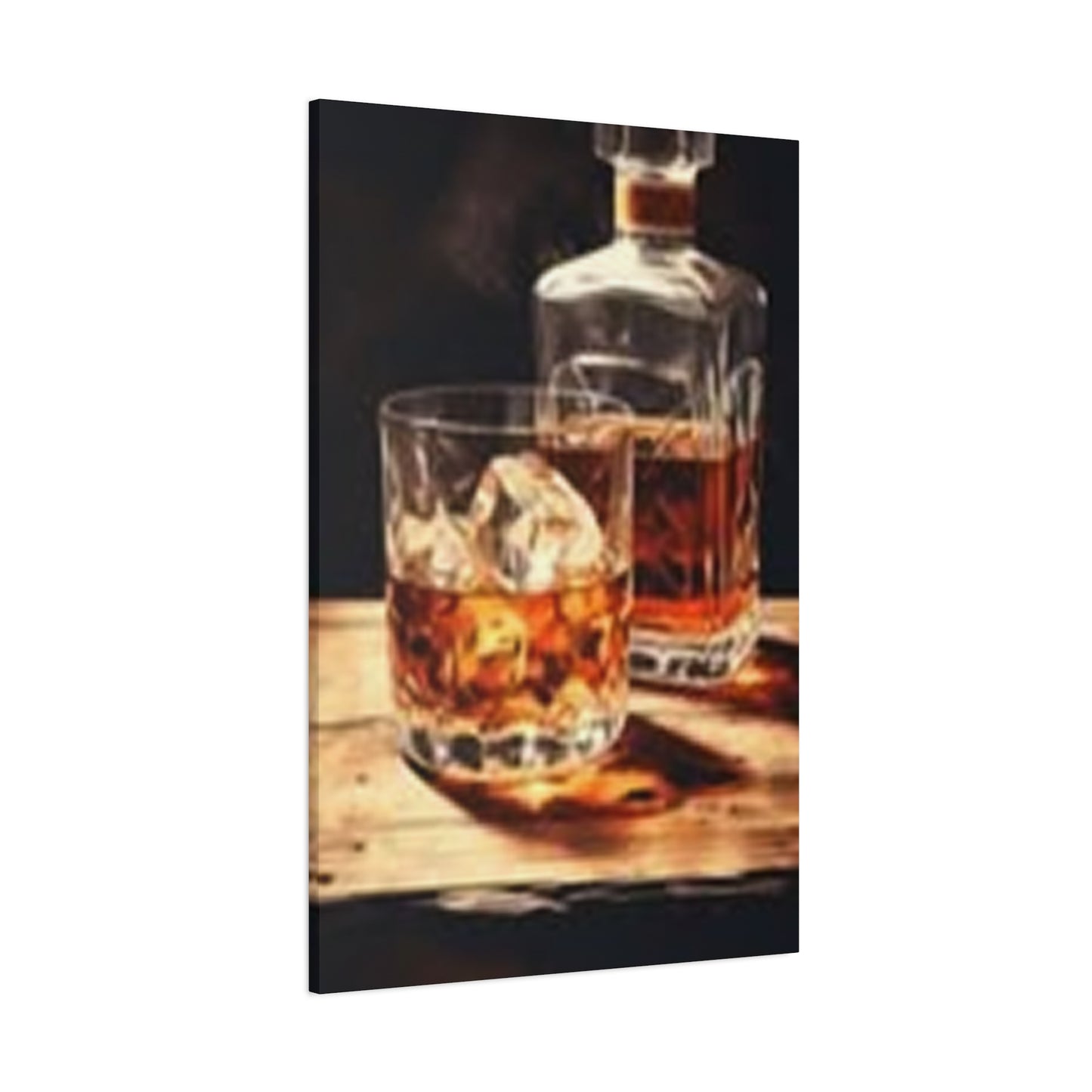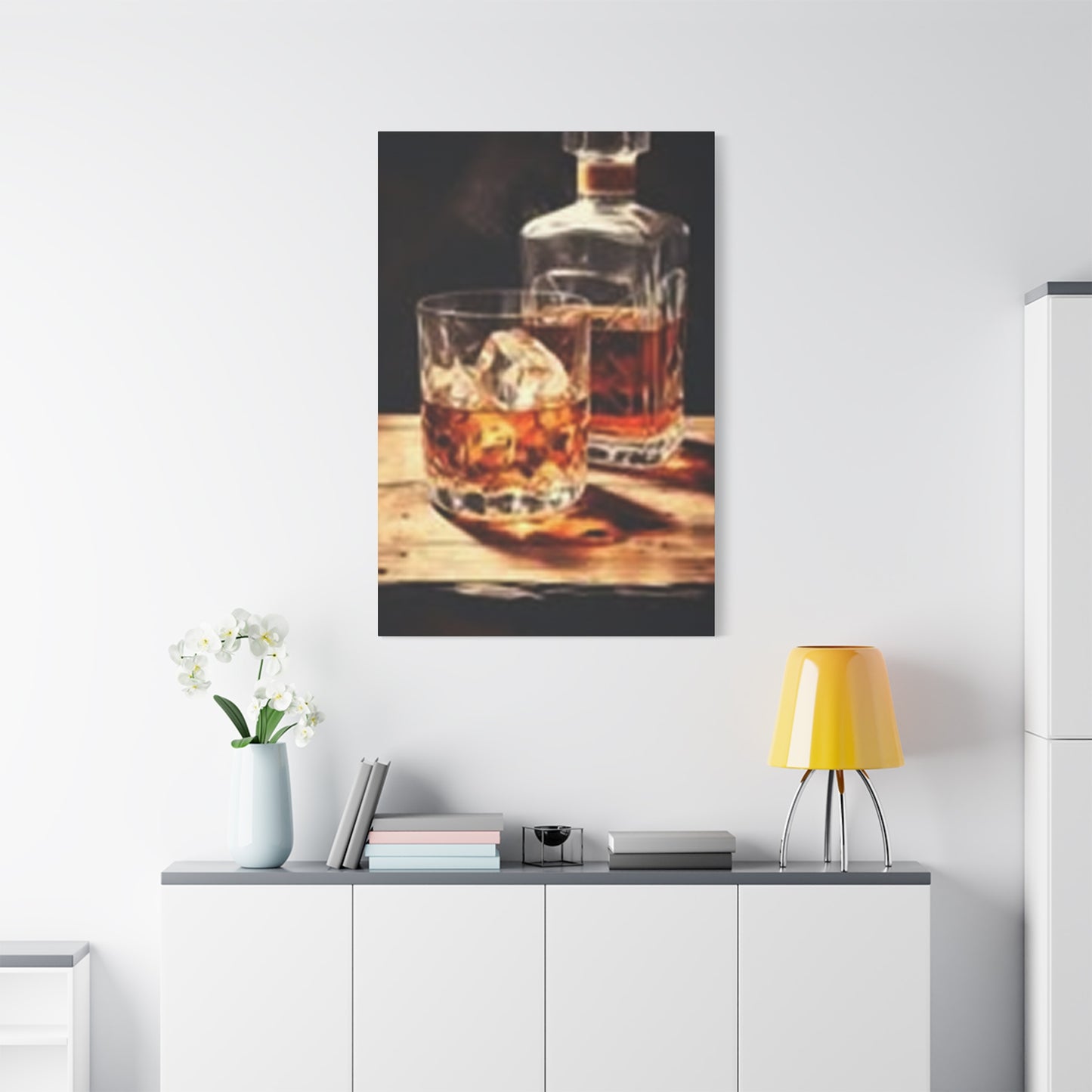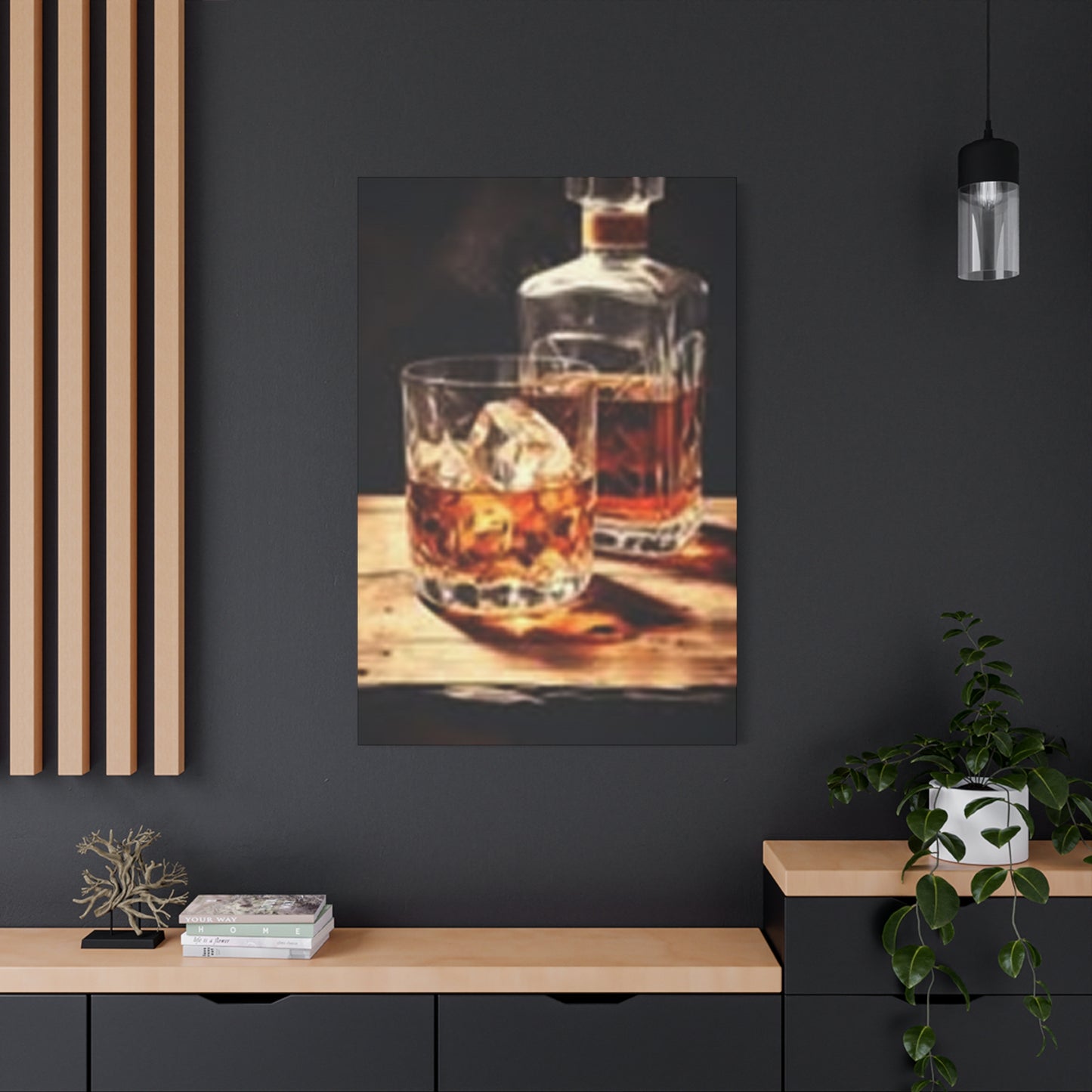Capturing Spirit: Whiskey Photography Wall Art That Brings Character to Your Space
Whiskey photography wall art has emerged as one of the most sophisticated and appealing choices for contemporary home and commercial interior decoration. This artistic niche captures the essence of one of the world's most beloved spirits through stunning visual representations that speak to both whiskey enthusiasts and art collectors alike. The appeal lies not just in the subject matter but in the way photographers capture the amber liquid's depth, clarity, and character through their lenses.
Interior designers and homeowners increasingly recognize the value of incorporating whiskey-themed photography into their spaces. These pieces serve multiple purposes beyond mere decoration. They create conversation starters, establish sophisticated atmospheres, and demonstrate refined taste. Whether displayed in home bars, dining rooms, living spaces, or commercial establishments like restaurants and hotels, whiskey photography wall art adds a layer of elegance and personality that few other artistic subjects can match.
The market for whiskey photography wall art has expanded dramatically over recent years. Photographers specializing in beverage and spirits photography have developed innovative techniques to capture the liquid's beauty in ways that were previously impossible. From close-up shots revealing intricate details of the spirit to elaborate compositions featuring bottles, glasses, and atmospheric lighting, the variety available ensures there's something for every aesthetic preference and design requirement.
Essential Elements That Define Outstanding Whiskey Photography Wall Art
Creating compelling whiskey photography wall art requires mastery of several fundamental elements that separate amateur snapshots from professional artwork worthy of display. Lighting stands as perhaps the most critical component in whiskey photography. The way light interacts with the amber liquid creates drama, depth, and visual interest. Photographers must understand how to manipulate both natural and artificial light sources to highlight the whiskey's color variations, from pale gold to deep mahogany.
Composition plays an equally vital role in producing memorable whiskey photography wall art. The arrangement of elements within the frame determines whether an image feels balanced and intentional or cluttered and accidental. Professional photographers carefully consider the placement of bottles, glasses, ice, and props to guide the viewer's eye through the image. They understand the rule of thirds, leading lines, and negative space, using these principles to create photographs that feel both natural and deliberately artistic.
Color grading and post-processing techniques significantly impact the final appearance of whiskey photography wall art. The warm tones naturally present in whiskey photography can be enhanced or modified to suit different moods and design schemes. Some photographers prefer rich, saturated colors that emphasize the whiskey's warmth and depth, while others opt for more muted, sophisticated palettes that suggest refinement and restraint. The post-processing stage allows photographers to fine-tune every aspect of the image, ensuring it looks its absolute best when printed and displayed.
Texture and detail capture separates exceptional whiskey photography from mediocre attempts. The best whiskey photography wall art reveals subtle elements that might go unnoticed in person, such as the way light refracts through the liquid, condensation forming on a cold glass, or the grain pattern in wooden barrels. These details create visual richness and reward viewers who take time to examine the artwork closely, discovering new elements with each viewing.
How Whiskey Photography Wall Art Enhances Different Interior Spaces
The versatility of whiskey photography wall art makes it suitable for numerous interior environments, each benefiting differently from this sophisticated artistic choice. In residential home bars and entertainment spaces, whiskey photography creates an immediate atmosphere of refinement and celebration. Large-format prints showcasing premium bottles or artistic pour shots establish the space's purpose while elevating it beyond a simple storage area for spirits. The artwork serves as both decoration and inspiration, reminding homeowners and guests of the craftsmanship and tradition behind their favorite beverages.
Living rooms and dens gain character and personality through carefully selected whiskey photography wall art. Unlike generic landscape or abstract pieces, whiskey photography tells a story and reflects the homeowner's interests and sophistication. A well-curated collection of whiskey photographs can anchor an entire room's design scheme, with furniture, textiles, and accessories chosen to complement the artwork's colors and mood. The key lies in selecting pieces that balance boldness with subtlety, making statements without overwhelming the space.
Commercial establishments particularly benefit from incorporating whiskey photography wall art into their design strategies. Upscale restaurants, hotels, and bars use these pieces to establish ambiance and communicate their commitment to quality. A series of whiskey photographs in a hotel lounge might feature different expressions from around the world, subtly educating guests while beautifying the space. Restaurants with extensive whiskey selections often display photography that highlights their offerings, creating visual connections between the artwork and the beverages available.
Office environments and professional spaces can also accommodate whiskey photography wall art when chosen thoughtfully. Executive offices, conference rooms, and reception areas in industries where entertaining clients is common find that whiskey photography projects success and sophistication without appearing overly casual. The key in professional settings involves selecting images that emphasize the craftsmanship, heritage, and quality aspects of whiskey culture rather than purely celebratory or party-focused imagery.
Photography Techniques That Bring Whiskey to Life in Wall Art
Macro photography techniques have revolutionized whiskey photography wall art by revealing details invisible to the naked eye. Photographers using macro lenses can capture the individual facets of ice crystals melting in whiskey, the tiny bubbles forming along the glass edge, or the intricate patterns created when water meets spirit. These extreme close-ups transform everyday elements into abstract compositions that fascinate viewers regardless of their interest in whiskey itself. The technical challenge of macro photography requires specialized equipment and considerable skill, but the resulting images offer unique perspectives that stand out in any art collection.
Backlit photography creates some of the most striking whiskey photography wall art available. By positioning light sources behind bottles or glasses, photographers transform the amber liquid into a glowing subject that seems to emit its own light. This technique emphasizes the whiskey's clarity and color while creating dramatic silhouettes of bottles and glassware. Backlit shots work particularly well in minimalist compositions where the focus remains entirely on the spirit itself, allowing its natural beauty to take center stage without distraction from surrounding elements.
Action photography captures whiskey in motion, freezing moments that occur too quickly for the human eye to fully appreciate. Splash shots showing whiskey being poured into a glass, ice cubes dropping into liquid, or bottles being opened create dynamic energy that static compositions cannot match. These action shots require precise timing, often utilizing high-speed photography equipment and careful planning to capture the perfect moment. The resulting images bring vitality and movement to wall displays, making them particularly suitable for spaces where energy and excitement are desired.
Environmental whiskey photography places the spirit within broader contexts that tell richer stories. Rather than isolating bottles or glasses against plain backgrounds, environmental shots might feature whiskey in distillery settings, rustic cabins, elegant libraries, or outdoor locations. These compositions provide context and narrative, allowing viewers to imagine themselves in the scene enjoying their favorite spirit. Environmental photography requires strong location scouting skills and the ability to blend beverage photography with landscape or architectural photography techniques.
Selecting the Perfect Whiskey Photography Wall Art for Your Space
Choosing appropriate whiskey photography wall art begins with assessing your space's existing design elements and color palette. The artwork should complement rather than clash with surrounding decor, though it can certainly serve as a bold accent that draws attention. Rooms with warm color schemes naturally accommodate whiskey photography's amber, gold, and brown tones, while cooler-toned spaces might benefit from whiskey photographs with bluer backgrounds or monochromatic processing that reduces the natural warmth of the subject matter.
Scale considerations prove crucial when selecting whiskey photography wall art. A common mistake involves choosing pieces too small for the available wall space, resulting in artwork that appears insignificant and fails to make the intended impact. Large walls demand substantial pieces or thoughtfully arranged groupings that fill the space appropriately. Conversely, smaller walls and alcoves benefit from modestly sized photographs that fit comfortably without overwhelming the area. Professional interior designers often recommend that artwork occupy approximately two-thirds to three-quarters of the available wall width for optimal visual balance.
The style of whiskey photography should align with the space's overall aesthetic approach. Traditional or classic interiors pair beautifully with whiskey photography featuring vintage bottles, antique glassware, or heritage brand imagery processed to suggest age and history. Contemporary spaces allow for more experimental whiskey photography, including abstract compositions, unconventional angles, and bold color treatments. Industrial design schemes work well with whiskey photography emphasizing raw materials like copper stills, wooden barrels, and distillery equipment.
Personal connection to the subject matter enhances the enjoyment and meaning of whiskey photography wall art. Enthusiasts might seek photographs featuring their favorite brands or regional styles, creating deeper emotional connections to the artwork. Someone passionate about Scottish single malts might display photography featuring Highland distilleries or Islay landscapes, while bourbon lovers might prefer images showcasing Kentucky heritage. This personalization transforms wall art from simple decoration into meaningful representation of individual interests and experiences.
The Artistry Behind Capturing Whiskey in Photographs
Professional whiskey photography requires extensive knowledge beyond basic photographic skills. Photographers must understand the spirit itself, including how different varieties display distinct color characteristics, viscosity, and clarity. Scotch whisky, bourbon, rye, and other styles each present unique visual properties that knowledgeable photographers can highlight. This expertise allows artists to make informed decisions about which whiskeys to feature and how to present them for maximum visual impact.
Equipment selection significantly influences the quality of whiskey photography wall art. While modern smartphones can capture decent images, professional whiskey photography typically employs full-frame cameras with high-resolution sensors capable of recording exceptional detail. Lens choices vary based on the desired effect, with macro lenses for detail shots, wide-angle lenses for environmental work, and prime lenses with wide apertures for achieving beautiful background blur that isolates subjects. Lighting equipment ranging from simple speedlights to elaborate studio strobes allows photographers to sculpt light precisely.
The relationship between photographer and subject in whiskey photography involves both artistic vision and technical execution. Unlike portrait or landscape photography where subjects exist independently, whiskey photography often requires constructing entire scenes from scratch. Photographers must source appropriate bottles, glassware, and props, then arrange them into compositions that appear natural rather than staged. This process demands both creative imagination and practical problem-solving skills as photographers work through challenges like preventing glare on glass surfaces or achieving consistent lighting across multiple elements.
Post-processing workflows for whiskey photography wall art have become increasingly sophisticated. Professional photographers rarely present images straight from the camera, instead applying careful adjustments to optimize color, contrast, sharpness, and overall impact. Software like Adobe Lightroom and Photoshop allows precise control over every aspect of the image, from global adjustments affecting the entire photograph to local modifications targeting specific areas. The goal involves enhancing the natural beauty of the whiskey and composition while maintaining realistic appearance that doesn't veer into obvious manipulation.
Popular Styles and Themes in Whiskey Photography Wall Art
Minimalist whiskey photography has gained tremendous popularity for its clean, sophisticated aesthetic that works in diverse interior settings. These compositions typically feature a single bottle or glass against simple backgrounds, relying on exceptional lighting and composition rather than elaborate props or settings. The minimalist approach allows the whiskey itself to become the star, highlighting its color, clarity, and form without distraction. This style suits contemporary and modern interiors particularly well, offering visual breathing room that complements streamlined design philosophies.
Vintage and heritage-themed whiskey photography appeals to those appreciating history and tradition. These pieces often feature older bottle designs, antique glasses, weathered barrels, and aged accessories that evoke earlier eras of whiskey production and consumption. Photographers might employ processing techniques that add grain, fade colors slightly, or create the appearance of age, making new photographs resemble historical images. This nostalgic approach resonates with collectors of vintage spirits and those decorating spaces with classic or traditional design elements.
Luxury-focused whiskey photography emphasizes premium bottles, rare expressions, and opulent settings that communicate exclusivity and refinement. These images might feature expensive crystal glassware, gold accents, leather-bound books, and other symbols of wealth and sophistication surrounding the whiskey. The lighting tends toward dramatic and moody, creating depth and shadow that add mystery and allure. Luxury whiskey photography works exceptionally well in high-end commercial spaces and upscale residential interiors where establishing an atmosphere of elegance and success is desired.
Abstract and artistic interpretations of whiskey photography push beyond literal representations to explore the spirit as pure visual subject. These pieces might focus on patterns created by light refracting through liquid, close-ups so extreme the subject becomes unrecognizable, or intentional blur and motion that creates painterly effects. Abstract whiskey photography appeals to art collectors and design enthusiasts who appreciate photography as fine art rather than simple documentation. These pieces can bridge the gap between whiskey enthusiasts and contemporary art collectors.
Creating Gallery Walls with Whiskey Photography Art
Gallery walls featuring whiskey photography allow collectors to display multiple pieces in cohesive arrangements that make stronger visual statements than single artworks. Planning successful gallery walls requires considering how individual photographs relate to each other in terms of style, color palette, and subject matter. A unified approach might feature all images processed similarly with consistent framing, while eclectic galleries mix styles and formats for more dynamic visual interest. The key involves ensuring that despite differences, all pieces share some connecting elements that tie the collection together.
Layout planning for whiskey photography gallery walls involves both mathematical precision and artistic intuition. Traditional approaches center the arrangement around one anchor piece, typically the largest or most striking photograph, with smaller pieces arranged symmetrically or asymmetrically around it. Modern gallery walls often employ grid layouts with uniformly sized and spaced frames creating clean, contemporary appearances. Salon-style arrangements pack frames more densely in organic patterns that feel casual and collected over time. Each approach offers distinct aesthetic qualities suitable for different spaces and design preferences.
Frame selection plays a crucial role in gallery wall success. Consistent framing creates cohesive, intentional appearances, while varied frames can add visual interest if chosen thoughtfully. For whiskey photography wall art, frames should complement rather than compete with the images. Simple black, white, or natural wood frames work well with most whiskey photography, allowing the artwork to remain the focus. Mat boards in complementary colors can enhance the presentation while creating visual separation between the photograph and frame.
Spacing and arrangement logistics require careful measurement and planning. Professional installers often create paper templates matching frame dimensions, arranging them on the floor until achieving satisfactory layouts before installing anything on walls. This approach allows experimentation without leaving unnecessary holes in walls. Standard spacing between frames typically ranges from two to four inches, though this can vary based on frame sizes and overall arrangement style. Maintaining consistent spacing creates professional appearances, while intentionally varied spacing can produce more organic, casual effects.
Whiskey Photography Wall Art in Commercial Establishments
Bars and pubs benefit enormously from incorporating whiskey photography wall art into their interior design strategies. These establishments naturally align with whiskey imagery, making the artwork feel authentic and appropriate rather than forced. Large-format photographs of whiskey bottles, glasses, or distillery scenes create immersive environments that enhance the drinking experience. Many establishments commission custom photography featuring the specific brands they carry, creating unique artwork unavailable elsewhere while promoting their inventory in artistic ways.
Restaurants with significant whiskey programs use photography to educate and entice guests. A series of photographs might showcase different whiskey-producing regions, each accompanied by subtle information about the area's distinctive characteristics. This approach serves dual purposes, beautifying the space while informing customers about the restaurant's offerings. Some establishments rotate their whiskey photography seasonally, keeping the visual environment fresh and giving regular customers new elements to discover and discuss.
Hotels and resorts incorporate whiskey photography to establish sophisticated atmospheres in bars, lounges, and guest rooms. A hotel positioning itself as a destination for discerning travelers might feature an extensive collection of whiskey photography throughout public spaces and higher-tier accommodations. This consistent thematic element helps define the property's identity and appeals specifically to affluent guests who appreciate fine spirits. The photography becomes part of the overall brand experience, contributing to memorable stays that encourage return visits and positive reviews.
Corporate entertainment spaces and private clubs use whiskey photography to create exclusive, refined environments where business relationships develop over shared appreciation for quality spirits. These spaces typically feature more understated whiskey photography that suggests sophistication without appearing ostentatious. The artwork serves as backdrop rather than focal point, creating appropriate ambiance for conversations and meetings. Many private clubs commission photography featuring bottles from their own collections, creating personalized artwork that members recognize and appreciate.
Displaying Whiskey Photography Wall Art
Print quality dramatically affects how whiskey photography wall art appears when displayed. Professional-grade prints utilize archival papers and pigment-based inks that reproduce colors accurately and resist fading over time. The paper or substrate choice influences the final appearance significantly, with options ranging from glossy papers that maximize color vibrancy to matte papers offering more subtle, sophisticated presentations. Canvas prints provide texture and dimension, while acrylic and metal prints create modern, high-impact displays with exceptional depth and luminosity.
Resolution requirements ensure whiskey photography maintains clarity and detail at large sizes. Images intended for substantial wall displays must begin with high-resolution captures, typically requiring 300 pixels per inch at the final print dimensions. Enlarging low-resolution images beyond their optimal size results in visible pixelation and softness that diminishes the professional quality essential for fine art displays. Photographers specializing in wall art typically shoot with high-megapixel cameras and retain maximum file sizes to allow flexible sizing options.
Color management throughout the workflow from capture to display prevents disappointing mismatches between what photographers see on screens and how prints appear. Professional workflows employ calibrated monitors, color-managed software, and communication with print services using standardized color profiles. This attention to color accuracy proves particularly important for whiskey photography, where subtle variations in amber tones, golden highlights, and warm shadows contribute significantly to the image's overall impact and appeal.
Lighting considerations for displayed whiskey photography extend beyond the photography itself to how artwork is illuminated in its installation location. Direct sunlight can damage prints over time while also creating glare that prevents proper viewing. Artificial lighting should be carefully positioned to illuminate artwork evenly without creating hotspots or reflections, particularly on glossy or glass-covered prints. Picture lights, track lighting, or strategic placement near existing light sources can enhance visibility while protecting the investment in quality photography and printing.
Regional Whiskey Styles Represented in Wall Art Photography
Scotch whisky photography often emphasizes the rugged landscapes and maritime heritage of Scottish distilling regions. Images might feature coastal distilleries with waves crashing against rocky shores, Highland mountains shrouded in mist, or peat bogs where traditional fuel is harvested. The photography style tends toward moody and atmospheric, reflecting Scotland's often dramatic weather and the complex, sometimes brooding character of Scotch whisky itself. Bottles from famous distilleries become instantly recognizable to enthusiasts, adding layers of meaning for knowledgeable viewers.
Bourbon photography celebrates American whiskey heritage through imagery connected to Kentucky and Tennessee traditions. Photographers might capture rolling hills dotted with horse farms, white-columned distillery buildings evoking antebellum architecture, or rickhouses where thousands of barrels age quietly. The aesthetic often feels warmer and more accessible than Scotch photography, reflecting bourbon's traditionally more approachable character. Vintage Americana elements including old trucks, weathered barns, and handwritten signs contribute to nostalgic narratives that bourbon marketing has successfully cultivated.
Irish whiskey photography showcases the smooth, approachable character through lighter, more convivial compositions. Images might emphasize the social aspects of Irish drinking culture, featuring whiskey alongside conversation, music, or storytelling. The photography style tends toward warmer tones and welcoming compositions that invite viewers into the scene rather than maintaining distance. Historical elements referencing Ireland's long distilling tradition appear frequently, connecting modern expressions to centuries of heritage and craftsmanship.
Japanese whisky photography brings aesthetic sensibilities from Japanese art and design to beverage imagery. These pieces often exhibit exceptional attention to detail, balanced compositions reflecting wabi-sabi principles, and minimalist approaches that eliminate unnecessary elements. The photography might incorporate traditional Japanese materials like bamboo, ceramic, or handmade paper, creating fusion imagery that honors both whisky craftsmanship and Japanese cultural traditions. This distinctive style has gained international appreciation as Japanese whisky's reputation has soared in recent years.
Seasonal and Thematic Whiskey Photography Collections
Winter-themed whiskey photography resonates strongly with the spirit's warming qualities and cold-weather associations. These images might feature whiskey beside crackling fireplaces, snow-covered landscapes visible through windows, or heavy wool blankets and leather chairs suggesting cozy comfort. The lighting tends toward warm and intimate, with golden tones dominating compositions that invite viewers to imagine themselves warming up with a dram on a cold evening. Holiday-specific imagery incorporating festive elements without becoming overly commercial appeals to those who display seasonal artwork.
Summer whiskey photography challenges the common perception that whiskey is exclusively a cold-weather drink. These compositions might show whiskey served over ice on sunny patios, bottles in outdoor settings like beaches or mountains, or refreshing whiskey cocktails suggesting warm-weather enjoyment. The lighting becomes brighter and more vibrant, with blues and greens balancing whiskey's natural warm tones. This seasonal perspective broadens whiskey's appeal and demonstrates its versatility as a year-round spirit rather than exclusively autumnal or winter beverage.
Celebration and milestone-themed whiskey photography captures the spirit's role in marking important occasions. Images might feature elegant table settings with whiskey as centerpiece, bottles being opened at gatherings, or glasses raised in toasts. These compositions convey joy, achievement, and camaraderie, positioning whiskey as part of life's meaningful moments. The photography style varies from formal and elegant for significant milestones to casual and energetic for everyday celebrations, offering options for different spaces and occasions.
Contemplative and solitary whiskey photography presents the spirit as companion for quiet reflection rather than social celebration. These images typically feature single glasses in intimate settings like home libraries, writing desks, or comfortable chairs positioned for solo enjoyment. The mood becomes more introspective and meditative, with softer lighting and compositions that emphasize stillness and peace. This thematic approach appeals to those who appreciate whiskey as part of personal rituals and private moments of relaxation.
Investment Value of Quality Whiskey Photography Wall Art
Limited edition whiskey photography prints offer potential appreciation value beyond their decorative function. Photographers producing numbered, signed editions create scarcity that can increase value over time, particularly if the photographer gains recognition or if specific images become highly sought after. Collectors approaching whiskey photography as investment typically focus on established photographers with proven track records, images that have won awards or received significant attention, or pieces connected to rare or discontinued whiskey expressions that gain historical significance.
Documentation and provenance matter significantly for whiskey photography intended as investment. Certificates of authenticity, edition numbers, and photographer signatures provide essential verification that protects value. Some photographers maintain registries documenting their limited edition releases, creating additional security for collectors. Proper documentation becomes particularly important if pieces are later sold or transferred, as new owners need verification of authenticity and edition status.
Condition preservation protects both aesthetic quality and potential investment value. Archival framing materials, UV-protective glazing, and proper display conditions prevent deterioration that could diminish value. Collectors serious about investment potential typically employ professional framers familiar with museum-quality standards, accepting higher initial costs in exchange for long-term protection. Storage of any pieces not currently displayed requires climate-controlled environments with stable temperature and humidity to prevent damage.
Market awareness helps collectors make informed decisions about acquiring whiskey photography wall art. Following photographers whose work resonates personally, attending exhibitions, and researching sales of comparable pieces provides insight into fair pricing and value trends. The whiskey photography market remains relatively young compared to established fine art categories, offering opportunities for early collectors to acquire works that may appreciate significantly as this niche matures and gains broader recognition in the art world.
Custom Commissioned Whiskey Photography for Personalized Wall Art
Commissioning custom whiskey photography allows collectors to obtain completely unique pieces tailored to specific preferences, spaces, and stories. The process typically begins with consultation between photographer and client, discussing the desired subject matter, style, mood, and intended display location. Clients might request photography featuring bottles from their personal collections, specific distilleries holding special meaning, or entirely original concepts that express their individual relationships with whiskey. This collaborative approach results in artwork unavailable anywhere else, creating truly personalized additions to art collections.
The investment required for commissioned whiskey photography varies widely based on photographer reputation, project complexity, and deliverable specifications. Simple studio sessions photographing client-provided bottles might cost several hundred dollars, while elaborate productions requiring location shooting, extensive props, and complex post-processing can command thousands. Clients receive not only finished prints but typically also digital files and reproduction rights specified in commission agreements, allowing future prints if needed without additional photography fees.
Timeline considerations affect commission planning, particularly for photography intended for specific events or completions of renovation projects. Quality whiskey photography cannot be rushed, requiring time for concept development, logistics coordination, shooting, and post-processing before final delivery. Clients should typically allow several weeks minimum from initial contact to final product delivery, with more complex projects potentially requiring months. Clear communication about deadlines and realistic scheduling prevents disappointment and ensures satisfactory results.
Collaboration between client and photographer works best when expectations are clearly established. Mood boards, example images, and detailed discussions help photographers understand client visions while allowing professionals to offer expertise about what will work best photographically. The most successful commissions balance client input with photographer creativity, resulting in pieces that satisfy client requirements while showcasing the photographer's artistic skills and unique perspective.
Whiskey Photography Styles for Different Design Aesthetics
Industrial design aesthetics pair beautifully with whiskey photography emphasizing production equipment and raw materials. Images featuring copper stills, steel tanks, worn wooden barrels, and distillery interiors with exposed brick and pipes complement spaces with similar material palettes. The photography style often includes desaturated colors, high contrast, and gritty textures that echo industrial design's appreciation for honest materials and functional beauty. These pieces work particularly well in loft spaces, renovated warehouse apartments, and commercial establishments with industrial design elements.
Rustic and farmhouse design styles naturally accommodate whiskey photography featuring natural wood, vintage elements, and countryside settings. Images might show whiskey on weathered barn wood, bottles in fields or orchards, or glasses beside stone fireplaces. The color palette emphasizes earth tones, with processing that may add warmth or slight fade suggesting age and use. These photographs complement shiplap walls, reclaimed wood furniture, and farmhouse sinks that define popular rustic interior design approaches.
Modern and contemporary spaces benefit from whiskey photography with clean lines, bold compositions, and sophisticated color treatments. These images might feature geometric arrangements, negative space, and minimal props that align with modern design's emphasis on simplicity and intentionality. The processing often includes careful color grading that creates cohesive, designer palettes rather than purely natural renditions. Large-format prints with dramatic impact suit the scale and confidence of modern interior design.
Traditional and classic interiors incorporate whiskey photography that respects heritage and established aesthetic principles. Images might include crystal glassware, leather-bound books, wood paneling, and other elements associated with traditional masculine luxury. The photography style tends toward rich colors, careful composition following classical principles, and lighting that creates depth without excessive drama. Gold or dark wood frames complement the artwork while maintaining the formality appropriate to traditional design schemes.
The Cultural Significance Captured in Whiskey Photography
Whiskey photography preserves and communicates the craft traditions behind spirit production. Images documenting traditional distilling techniques, master distillers at work, and hands-on production processes capture knowledge passed through generations. These photographs serve educational purposes beyond decoration, illustrating the human skill and dedication required to produce quality whiskey. For enthusiasts passionate about craftsmanship and heritage, this documentary aspect adds meaningful depth to the artwork's aesthetic appeal.
Regional identity and pride find expression through whiskey photography connected to specific locations and their distilling traditions. Photographs showcasing Kentucky bourbon country, Speyside distilleries, or Irish whiskey origins communicate sense of place as much as product. These images appeal to both residents of these regions who take pride in local traditions and admirers worldwide who appreciate regional distinctions. The photography becomes ambassador for places and cultures that might otherwise remain distant abstractions to many viewers.
Social and convivial traditions surrounding whiskey consumption appear frequently in lifestyle whiskey photography. Images of people sharing drams, glasses raised in friendship, or whiskey as centerpiece of gatherings capture the spirit's role in human connection. This aspect resonates particularly strongly as modern life increasingly occurs digitally rather than face-to-face, reminding viewers of whiskey's traditional place in real-world socialization and relationship building.
The symbolism of whiskey as marker of achievement, maturity, and sophistication receives visual expression through carefully crafted photography. Images associating whiskey with success markers like executive offices, first-class travel, or luxury environments communicate aspirational messaging that extends beyond the beverage itself. While this symbolism can appear commercial, skilled photographers transcend simple product placement to create artwork that explores these cultural associations with nuance and artistry.
Environmental Considerations in Whiskey Photography Display
Sunlight exposure poses the greatest environmental threat to whiskey photography wall art. Ultraviolet radiation causes colors to fade over time, with dramatic effects on pigment-based prints and photographs. Display locations should avoid direct sunlight, with pieces positioned on walls perpendicular to windows rather than opposite them. For locations where sunlight exposure is unavoidable, UV-filtering glazing on frames provides essential protection, blocking harmful radiation while allowing visible light to pass through for normal viewing.
Temperature and humidity fluctuations can damage both photographic prints and framing materials. Extreme heat causes adhesives to fail, papers to become brittle, and colors to shift. High humidity encourages mold growth and causes paper to expand and wrinkle. Ideal conditions for displaying whiskey photography wall art involve relatively stable temperatures between 65-75 degrees Fahrenheit and humidity levels around 40-50 percent. Avoiding display near heating vents, air conditioning units, or exterior walls that experience temperature variations helps maintain stable conditions.
Dust and airborne contaminants gradually accumulate on artwork, particularly pieces displayed without protective glazing. Regular, careful cleaning with appropriate materials prevents buildup that can become difficult to remove and may eventually cause permanent damage. Framed pieces under glass require less frequent cleaning, with occasional dusting of frames and glass sufficient for maintenance. Unframed prints or canvas pieces need more careful attention, typically requiring soft brush removal of dust rather than any wet cleaning that could damage the artwork.
Display location selection considers air quality factors beyond basic environmental controls. Kitchens expose artwork to grease and food particles that accumulate invisibly on surfaces. Bathrooms create humidity spikes during showers that can damage artwork despite average humidity levels being acceptable. Smoking indoors deposits residues that discolor prints and mat boards over time. While whiskey photography seems naturally suited for bars and entertainment spaces where drinking occurs, proper precautions protect these pieces just as artwork in any other location requires.
Digital Presentation of Whiskey Photography as Wall Art
Digital frames and displays offer alternative presentation methods for whiskey photography that provide flexibility impossible with traditional prints. High-quality digital frames with sufficient resolution can display photography at impressive sizes, with the ability to rotate through entire collections rather than committing to single images. This approach particularly appeals to collectors with extensive photography collections who wish to enjoy variety without space for numerous physical prints. Some digital frames connect to cloud services, allowing updates and changes remotely without physical access to the device.
Projection technology creates dramatic temporary displays of whiskey photography for special occasions or commercial applications. High-lumen projectors can transform entire walls into canvases for oversized whiskey photography, creating immersive environments that would be impractical or impossible with physical prints. Restaurants and bars might project rotating whiskey photography throughout evenings, changing ambiance as the night progresses. While not suitable for permanent home displays, projection offers creative possibilities for events and temporary installations.
Augmented reality applications are beginning to explore enhanced whiskey photography experiences where viewers access additional content through smartphones or AR glasses. A framed whiskey photograph might trigger virtual information overlays describing the featured bottle, distillery tours, or tasting notes when viewed through AR devices. While currently more gimmick than practical application for most collectors, advancing technology may make these enhanced experiences more common and valuable in future.
The permanence question surrounding digital displays versus physical prints affects collecting decisions. Traditional prints offer tangible ownership and proven longevity when properly cared for, with no concerns about technological obsolescence or format changes. Digital displays depend on functioning technology and file format compatibility that may not endure decades. Collectors focused on long-term value and traditional art market dynamics typically favor physical prints, while those prioritizing flexibility and novelty might embrace digital alternatives.
Framing Options That Enhance Whiskey Photography Wall Art
Traditional wood frames remain the most popular choice for whiskey photography, offering warmth and classic appeal that complements the subject matter naturally. Wood frame options range from simple profiles in natural finishes to elaborate moldings with decorative details and stained or painted surfaces. Darker woods like walnut and mahogany create rich, sophisticated frames particularly appropriate for whiskey photography, while lighter woods like maple or ash offer more neutral presentations suitable for contemporary settings. The wood grain itself adds organic texture that enhances the natural elements often present in whiskey photography.
Metal frames provide modern alternatives with clean lines and minimalist profiles that suit contemporary interiors. Thin metal frames in black, white, or metallic finishes create almost invisible borders that allow whiskey photography to dominate visually without frame competition. These frames work particularly well for minimalist whiskey photography and modern compositions where ornate framing would clash with the image's aesthetic. The durability and precise manufacturing of quality metal frames also ensures straight edges and perfect corners that contribute to professional presentations.
Floating frames create dimensional effects by suspending prints between two panes of glass or mounting prints on hidden spacers that create gaps between artwork and matting. This treatment adds subtle depth and sophistication particularly effective with minimalist whiskey photography where the floating effect enhances the image's modern sensibility. The technique requires careful execution to prevent damage to unprotected print edges and maintain clean appearance from all viewing angles.
Mat selection significantly influences how framed whiskey photography appears. Single or multiple mats create visual breathing room between image and frame while adding color and dimension to the presentation. For whiskey photography, warm neutral mats in cream, tan, or soft gray typically complement the subject matter without introducing competing colors. The mat width should be proportional to both image and frame size, with larger pieces typically requiring wider mats to maintain balanced proportions. Some collectors choose to display whiskey photography without mats for more contemporary appearances, though this approach requires careful frame selection to prevent overwhelming the image.
Maintaining Whiskey Photography Wall Art Collections
Regular inspection routines help identify potential problems before they cause serious damage to whiskey photography collections. Monthly visual examinations checking for changes in color, spots suggesting mold growth, warping or buckling of prints or mats, and frame condition allow early intervention. Annual more thorough inspections removing pieces from walls to examine backs and edges catch issues that might not be visible during normal viewing. Documentation including photographs of artwork can help track changes over time that occur too gradually to notice month-to-month.
Cleaning procedures must match the specific materials and construction of each piece in a whiskey photography collection. Glass-covered framed pieces can be cleaned carefully with appropriate glass cleaners and soft, lint-free cloths, taking care not to allow any moisture to seep behind glass where it might damage prints or mats. Canvas prints typically require only gentle dusting with soft brushes, as moisture could damage the canvas or printed surface. Acrylic-mounted prints need non-ammonia cleaners to prevent damage to the acrylic surface.
Handling protocols protect whiskey photography when moving pieces for cleaning, storage, or relocation. Always lift from frame sides rather than tops to prevent stress on hanging hardware. Never touch print surfaces directly, as oils from fingers can cause permanent damage. When transporting framed whiskey photography, wrap pieces in clean cloth or protective materials and transport upright rather than flat when possible to prevent pressure on glass or acrylic. Large pieces may require two people to move safely without risk of dropping or bumping into walls and doorframes.
Conclusion
In conclusion, Whiskey Photography Wall Art stands as a testament to the bold, complex, and layered nature of whiskey itself, bringing both character and sophistication to any space. Through the lens of photography, these pieces capture not just the visual beauty of whiskey—its rich amber hues, its textured pours, and its elegant glassware—but also the deeper spirit of the drink: tradition, craftsmanship, and the ritual of savoring life’s finer moments. These images offer more than just a decorative touch; they serve as a visual celebration of whiskey’s cultural significance, evoking warmth, nostalgia, and a sense of timeless enjoyment.
The artistry of whiskey photography goes beyond just capturing a product—it’s about telling a story. A close-up shot of a whiskey glass catching the light in just the right way can communicate the process of distillation, the history behind the distilleries, and the craftsmanship that goes into every bottle. Every image, whether it’s a poured drink in motion or a solitary glass resting on a wooden bar, evokes a moment of pause and reflection, inviting viewers to appreciate not only the aesthetic of the drink but also the spirit it embodies. The photography often highlights the textures of the liquid, the shimmer of the ice, or the intricate details of the whiskey’s origin, making each piece a snapshot of art and heritage in one.
In modern interiors, whiskey photography wall art offers both versatility and impact. Whether in a home bar, study, or living room, these photographs add a touch of elegance and personality to the environment. The warm, earthy tones that whiskey photography often embraces complement both minimalist spaces—where a single bold piece can serve as the focal point—and more rustic or industrial rooms, where the images can enhance the atmosphere with their rich textures and vintage appeal. The striking visual quality of the photography enhances the ambiance, making it an ideal choice for spaces designed for relaxation, social gatherings, or even quiet moments of reflection.
Moreover, whiskey photography often celebrates the ritualistic nature of enjoying whiskey, aligning it with a sense of quality and leisure. It captures those fleeting moments—the pour of a perfect dram, the swirling of whiskey in a glass, the subtle reflections of light—that highlight the appreciation of the drink as more than just a beverage. It becomes an experience, one of savoring life, engaging in meaningful conversations, or enjoying solitude with a drink in hand. By incorporating whiskey photography into your space, you invite that same sense of character and presence into your home.
Ultimately, Whiskey Photography Wall Art not only brings sophistication and style to your space, but it also captures the essence of whiskey itself—rich, deep, and full of character. It’s an art form that blends perfectly with the contemporary aesthetic, infusing rooms with warmth, nostalgia, and a sense of artistry that honors the tradition of one of the world’s most celebrated spirits. Whether for the whiskey enthusiast or someone who simply appreciates fine craftsmanship, these pieces offer a way to bring character and depth to your home.

















